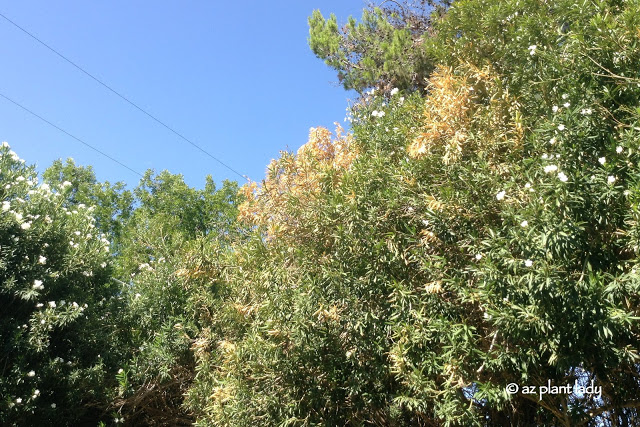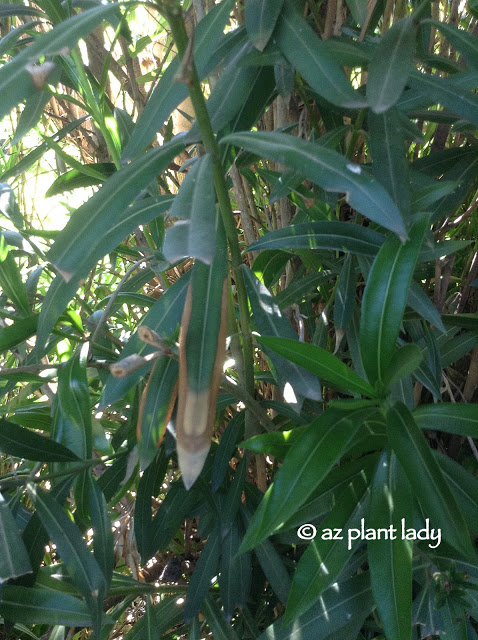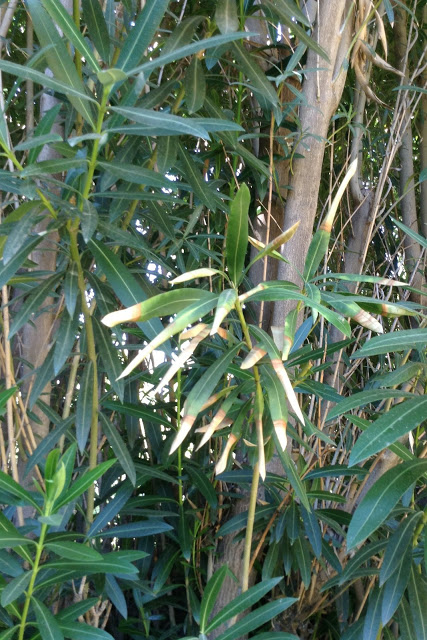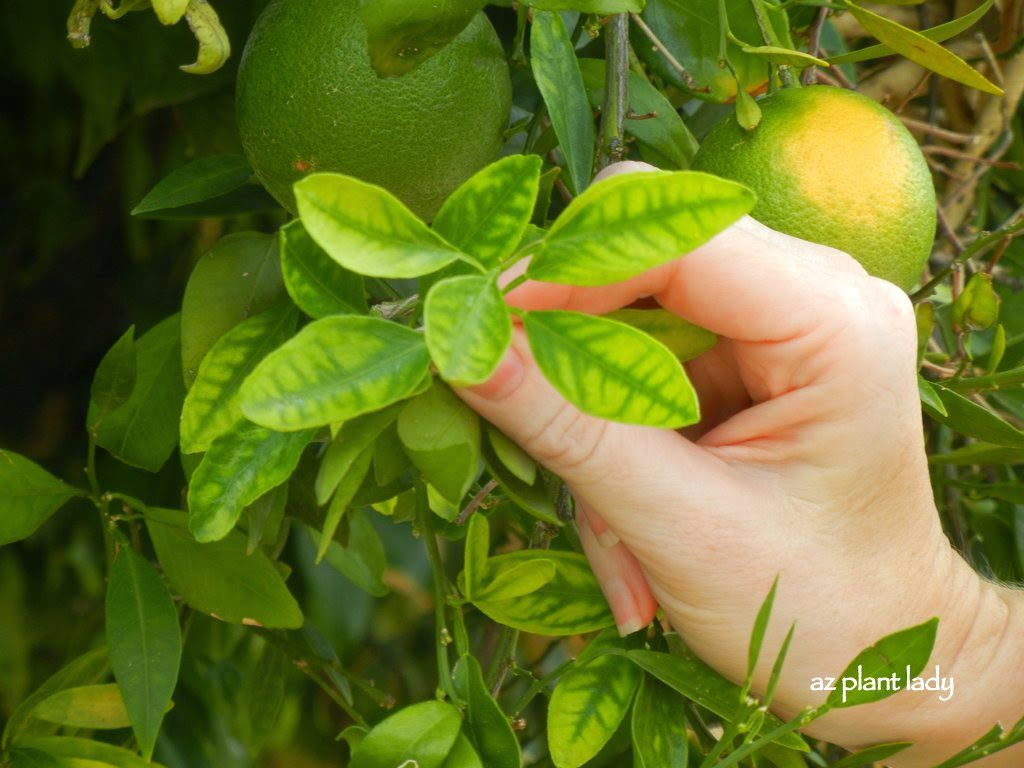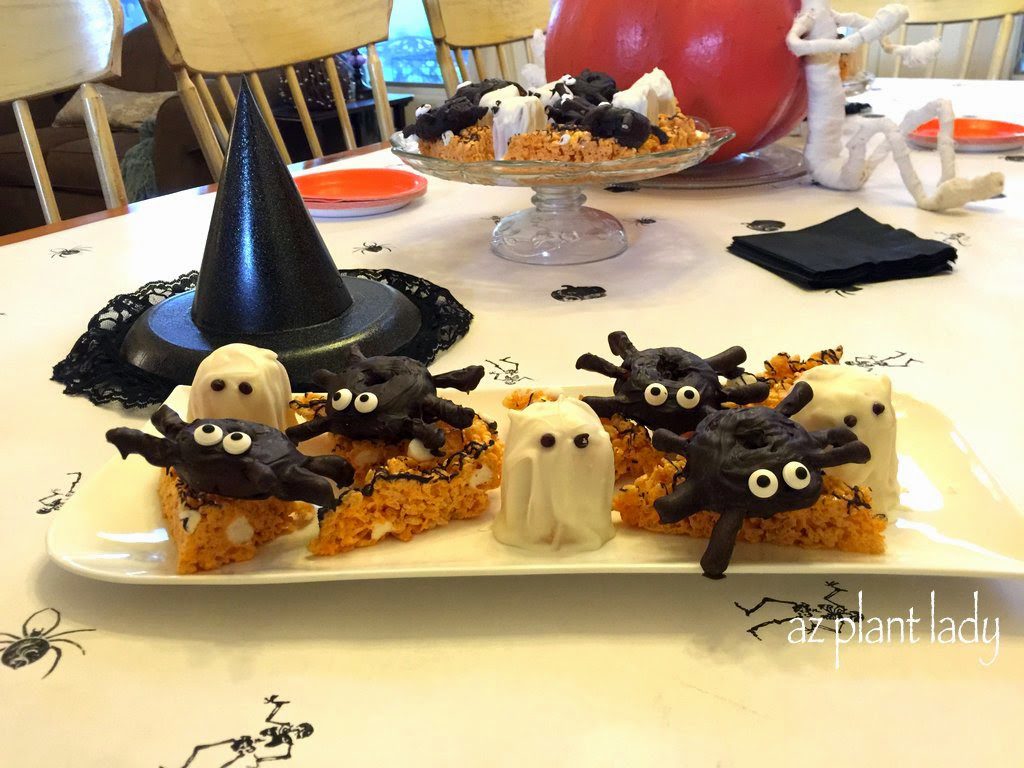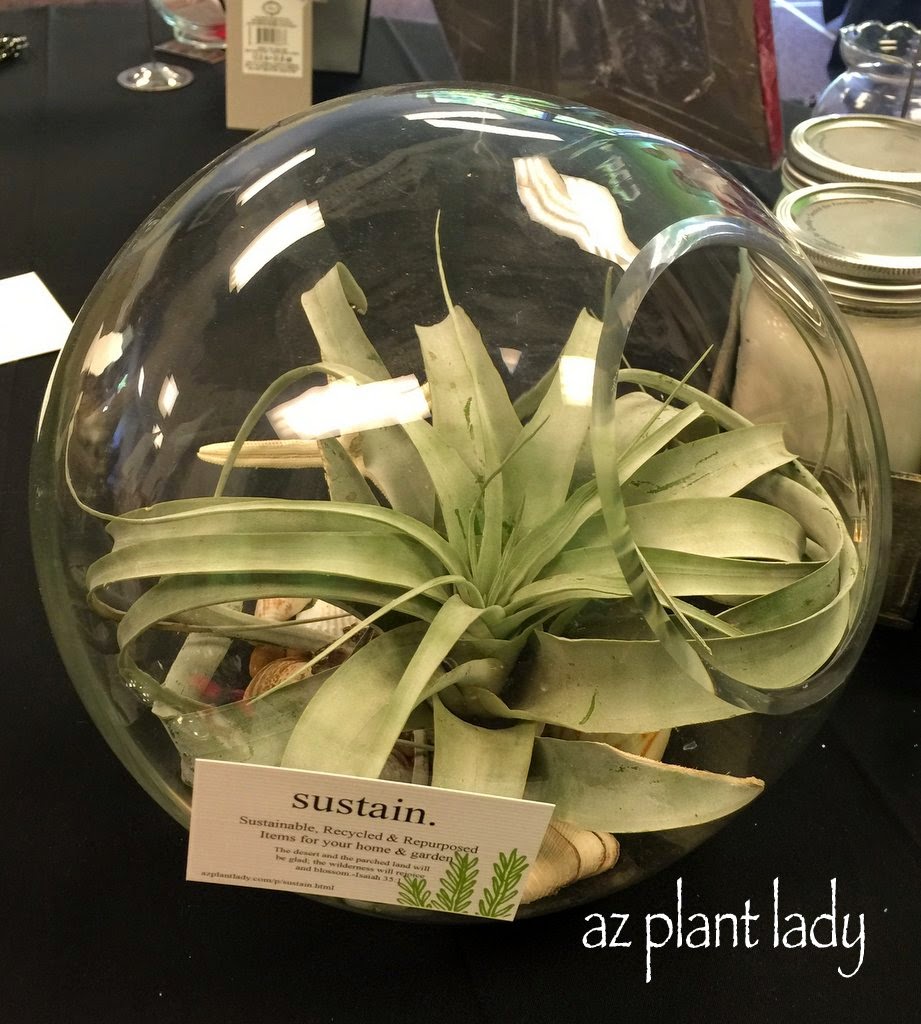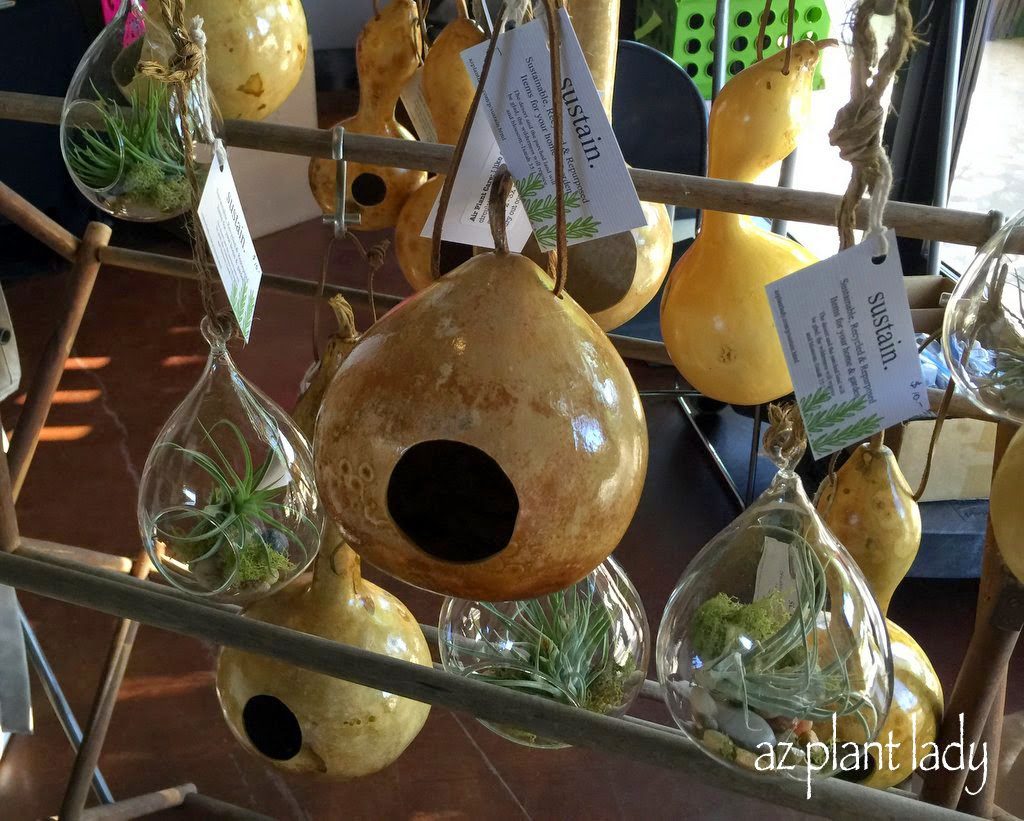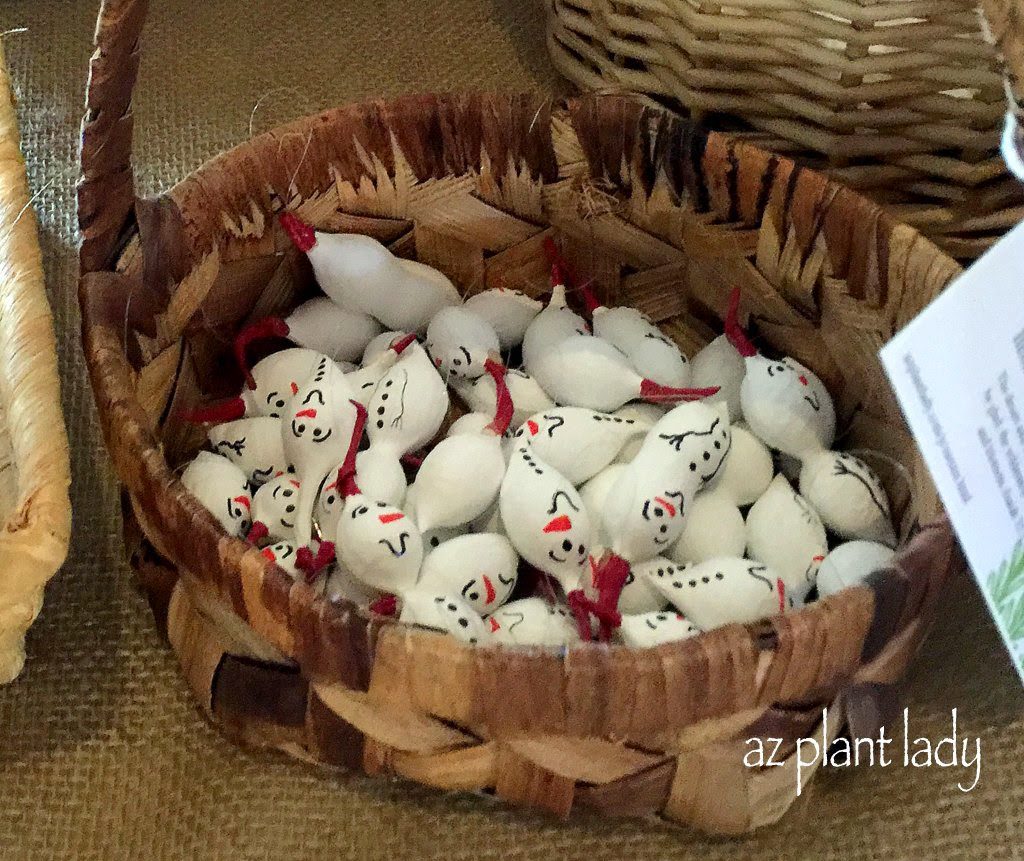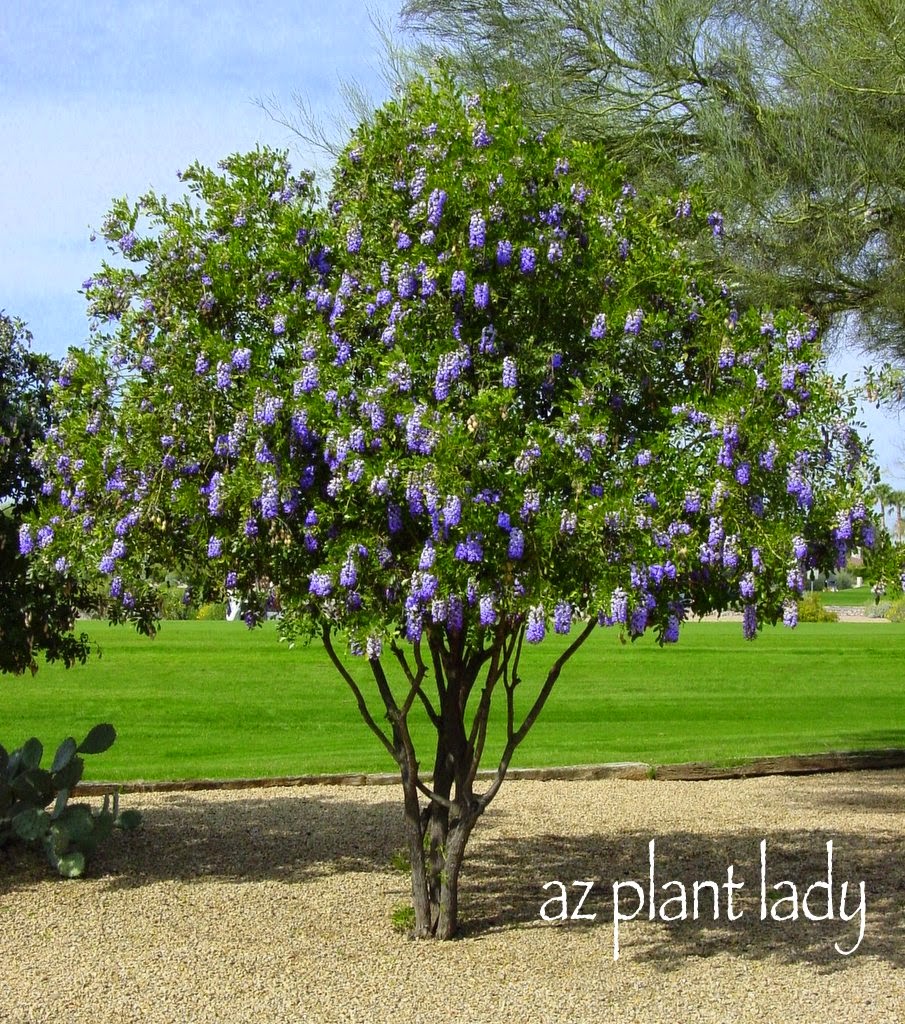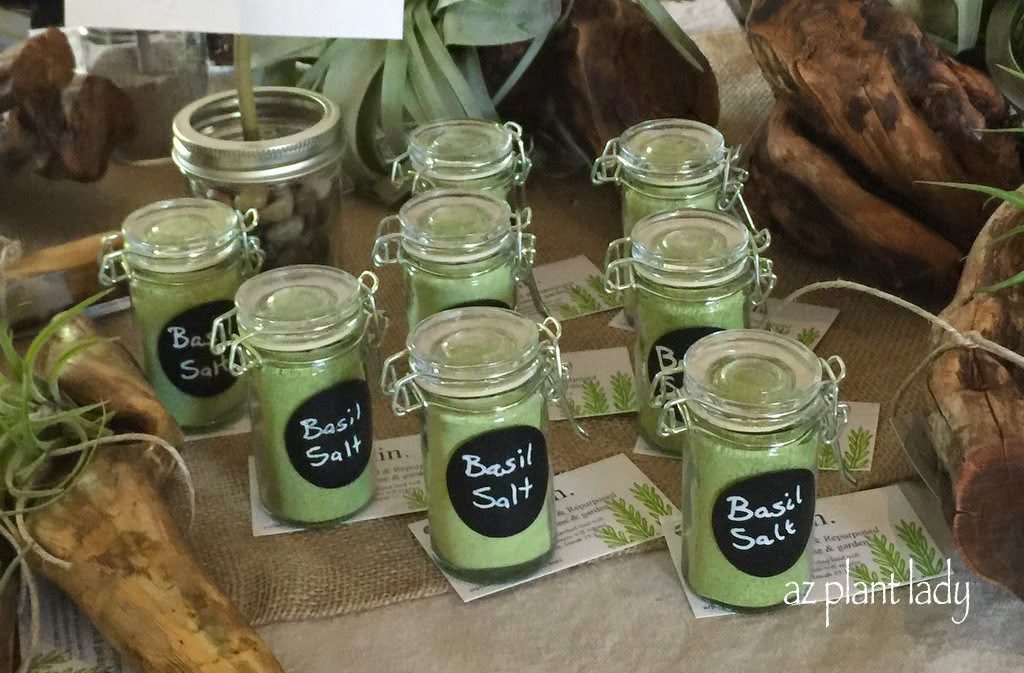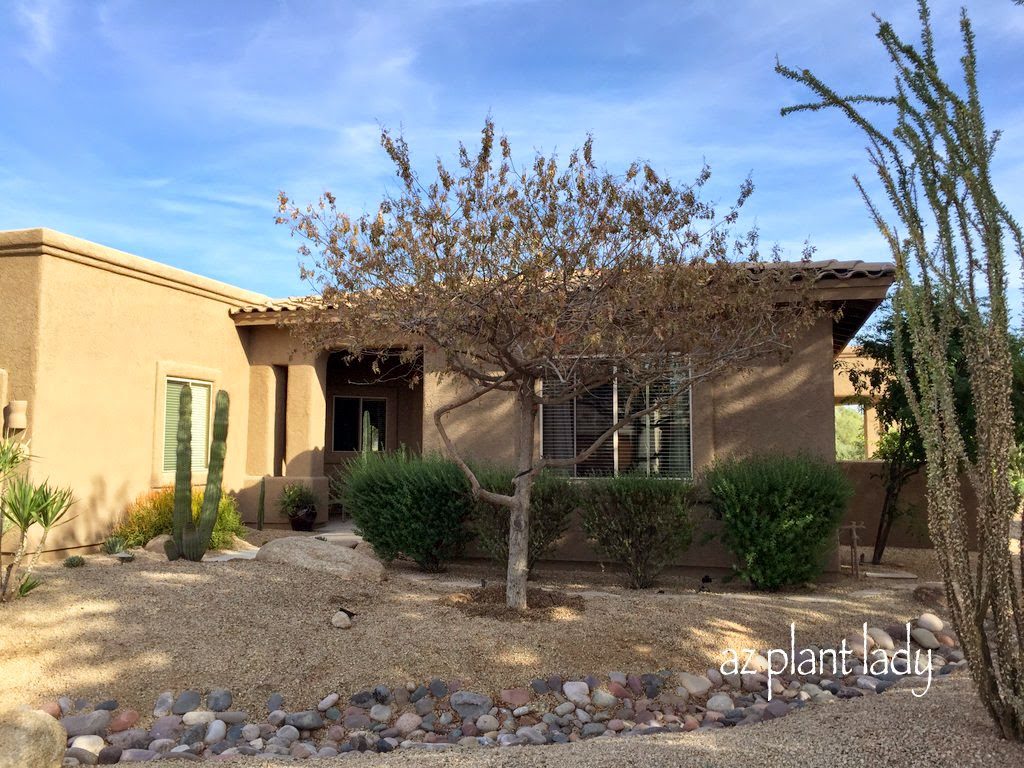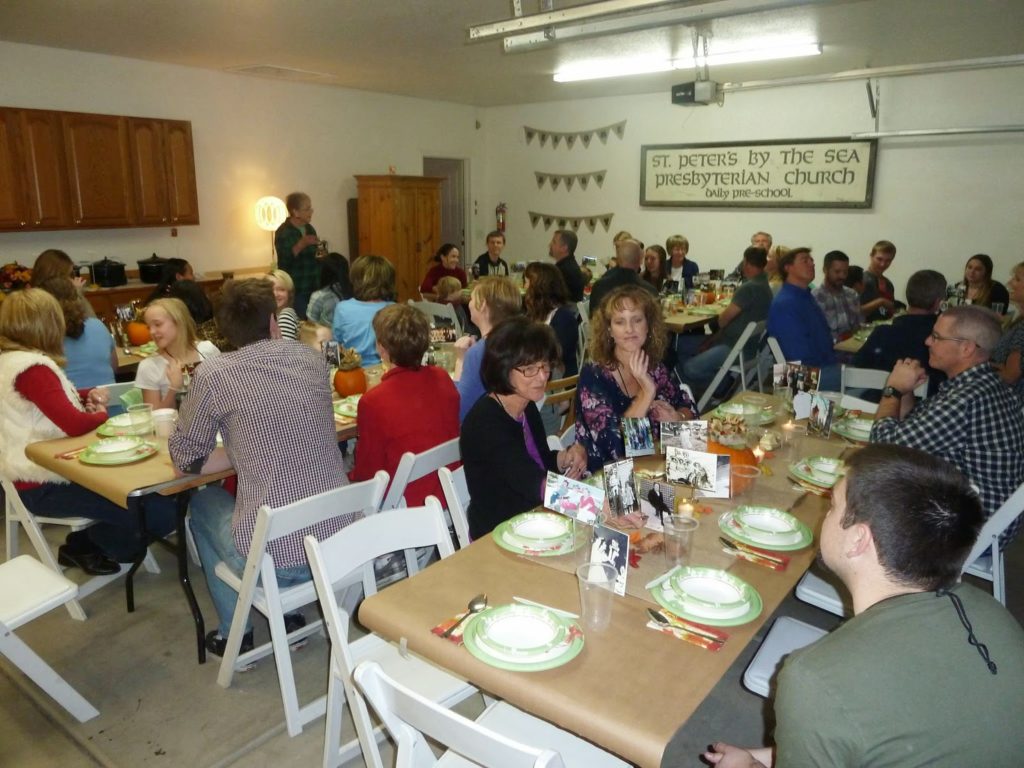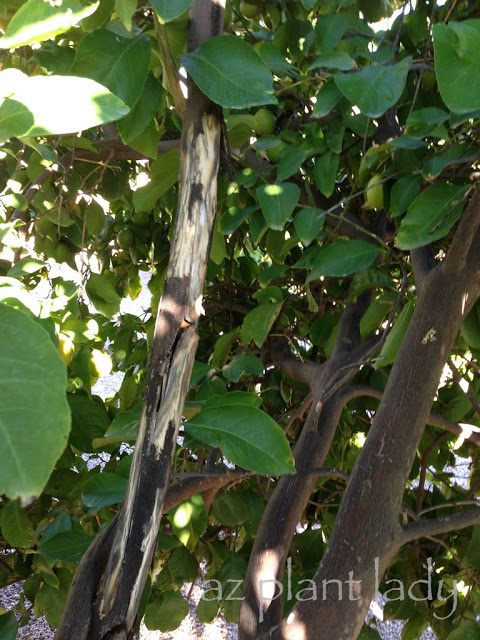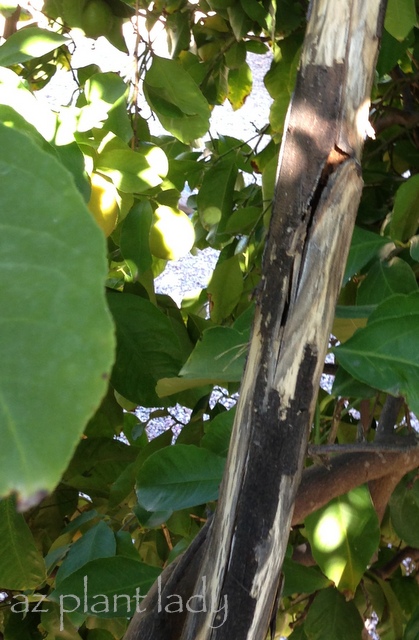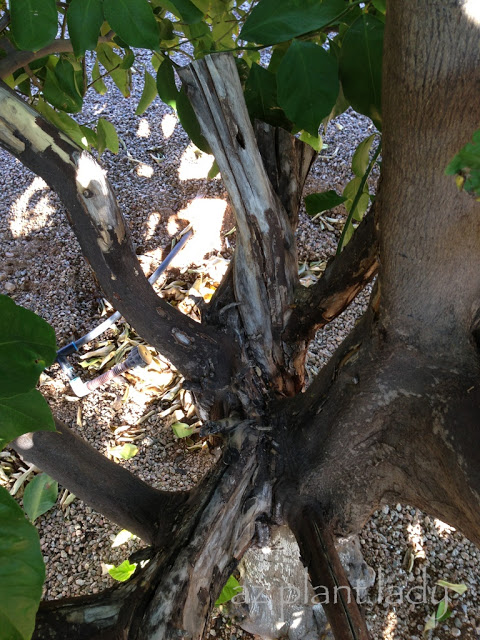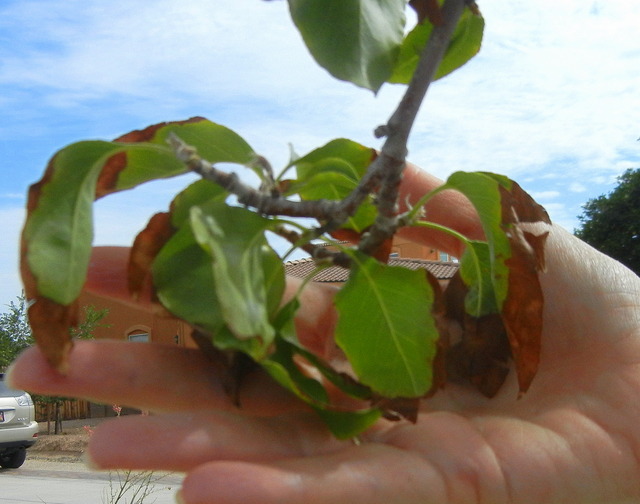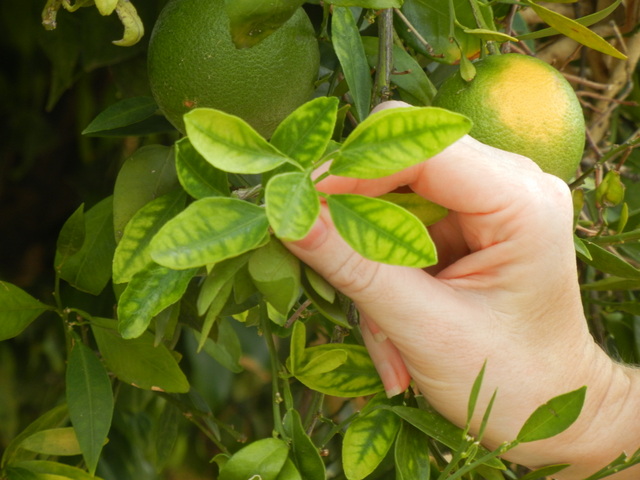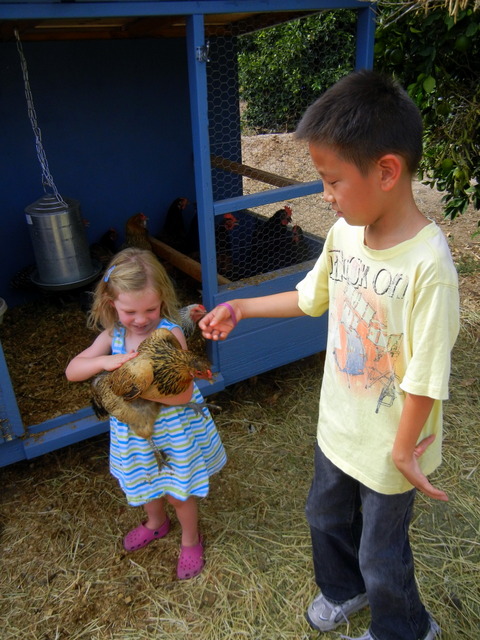Love them or hate them, oleanders have a firm foothold in the desert landscape where they are usually seen creating living green ‘walls’ in order to provide privacy.
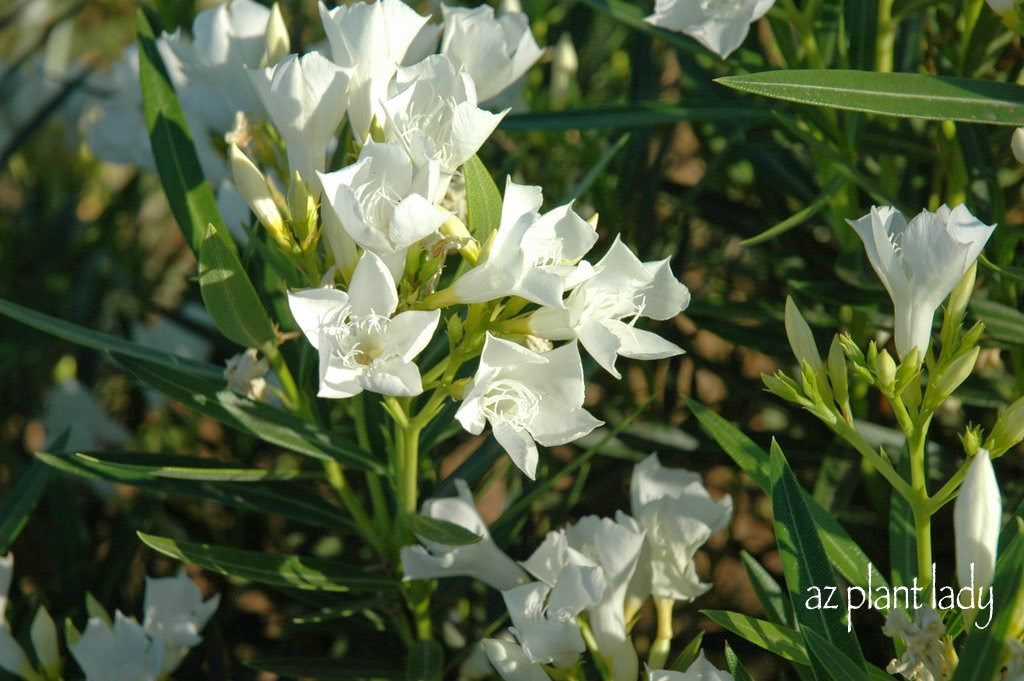
Their popularity is due in large part to several characteristics:
– Their evergreen foliage provides the rich, dark green color many miss living in the desert.
– Oleanders are easy to grow, with little to no fertilizer, and are drought tolerant once established.
– They add beauty to the landscape spring through fall with their flowers.
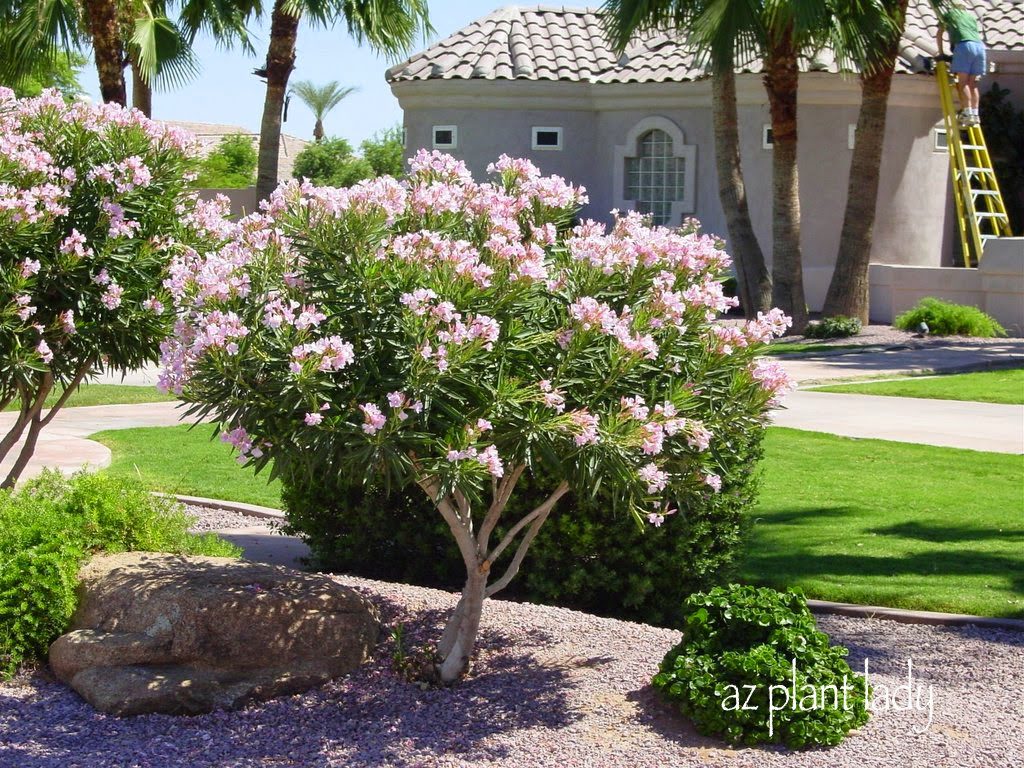
While oleanders’ popularity is still holding on, a fatal disease that affects them has spread from California and is now being seen increasingly in Arizona.
Oleander leaf scorch (Xylella fastidiosa) is a bacterial disease that plugs up the vascular system of affected oleanders, eventually making the movement of water throughout the plant impossible.
Flying insects, called sharpshooters, spread this disease. These small insects (1/4 inch long) become carriers of the disease when they feed upon an infected oleander. Thereafter, they spread it to every other oleander they feed upon.
Oleanders in Southern California were first diagnosed with the disease in the early ’90s, and it was just a matter of time before it spread to Arizona.
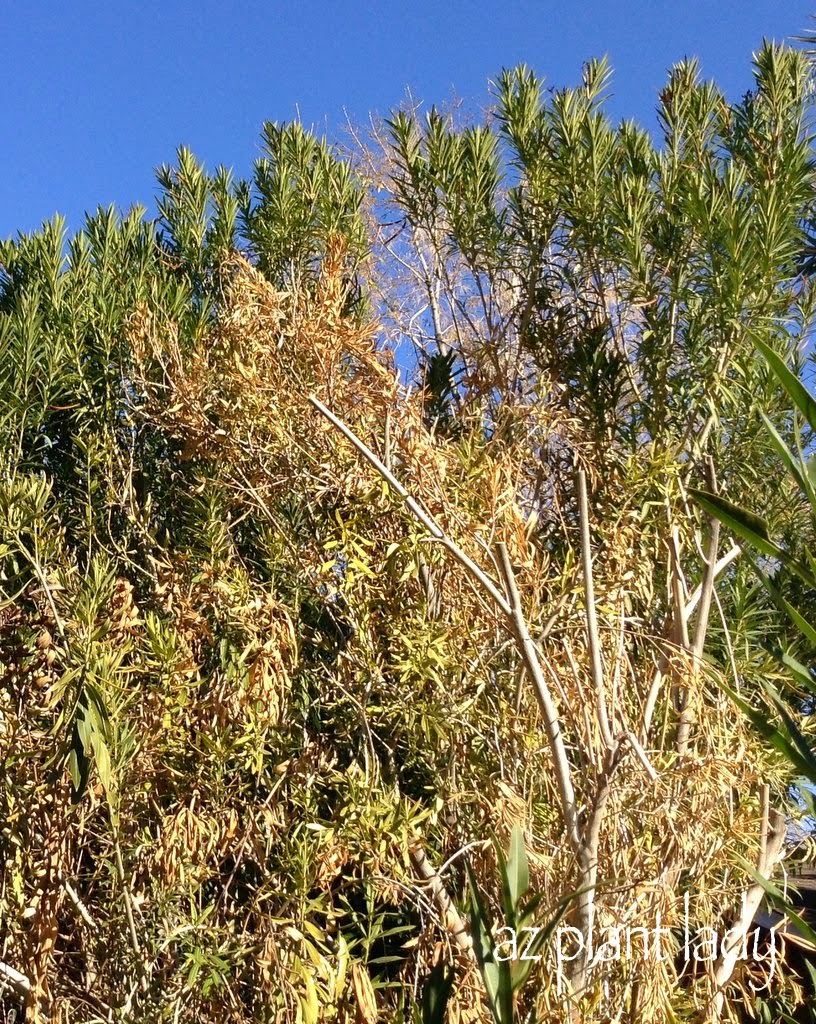
Advanced stages of oleander leaf scorch
Oleander leaf scorch was first diagnosed in Arizona in 2004. Its spread has been slow but inexorable.
I have seen several cases of this disease during landscape consultations, including one I did yesterday.
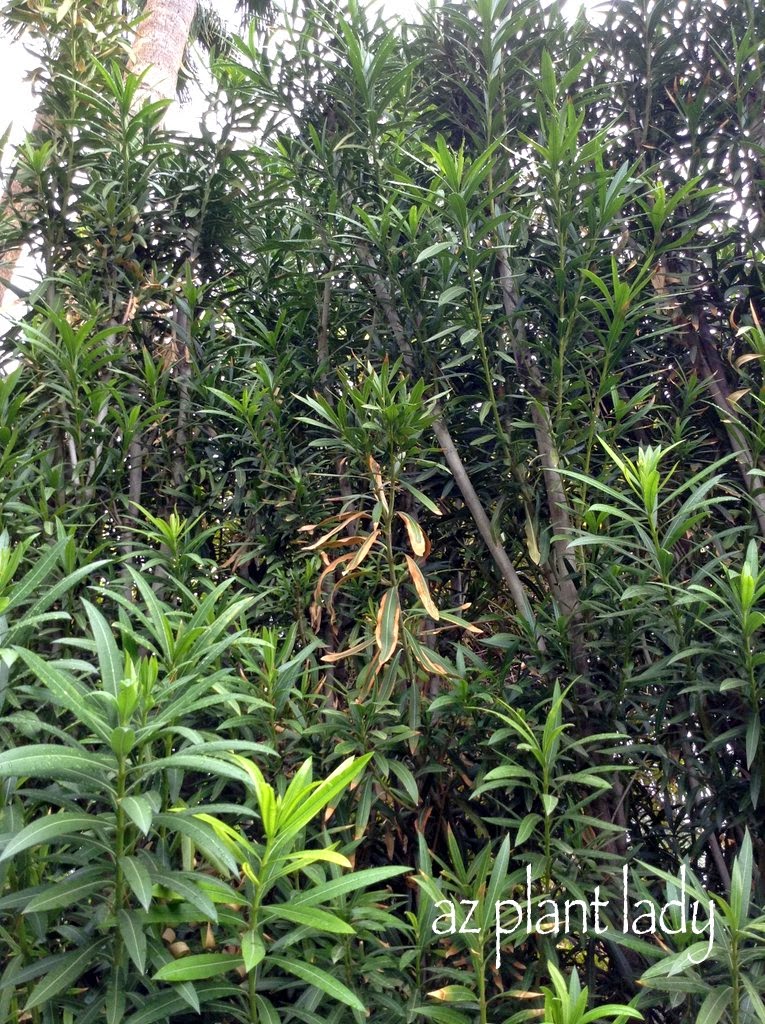
The homeowner had a very large, over 20-year-old oleander hedge that provided privacy from his neighbors.
What may look like some browning leaves on this small branch is one of the classic symptoms of oleander leaf scorch.
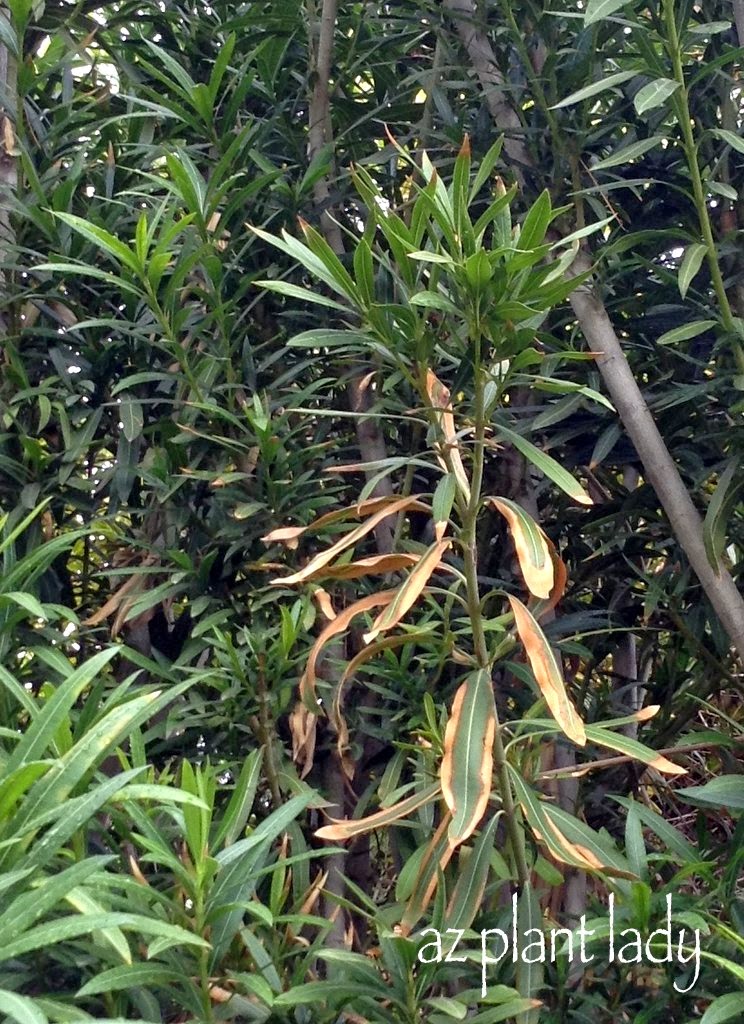
Oleander leaf scorch
In a close-up, you can see the brown outer leaf margins, which are characteristic of oleander leaf scorch. (This is not to be confused with drought symptoms, which cause discoloration of the middle of the leaf.)
As we continued to walk along the row of oleanders, the infected oleanders were interspersed between healthy ones. The reason for this is that the nature of flying insects is that they hop from one plant to another, but not necessarily the next plant – they may fly three shrubs away before feeding again or to the next yard or block.
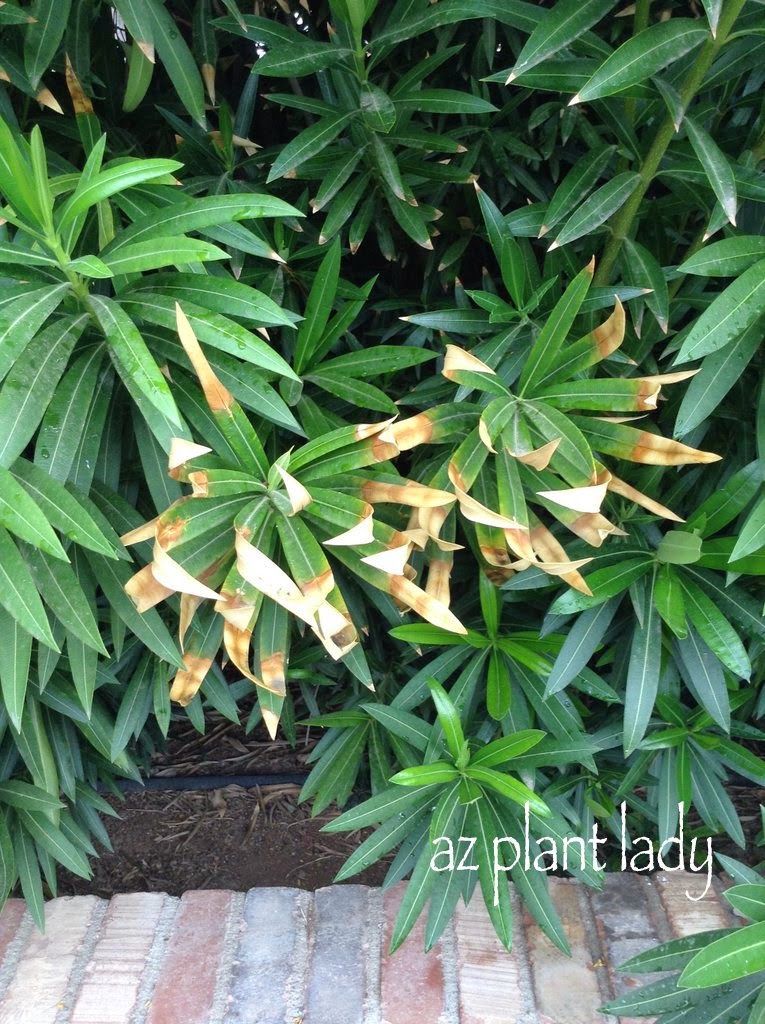
Symptoms of oleander leaf scorch
This oleander showed another type of browning symptom of oleander leaf scorch with the tips looking ‘scorched’.
It’s important to note that salt burn resulting from drought or shallow irrigation can cause similar symptoms, as shown in the photo below:
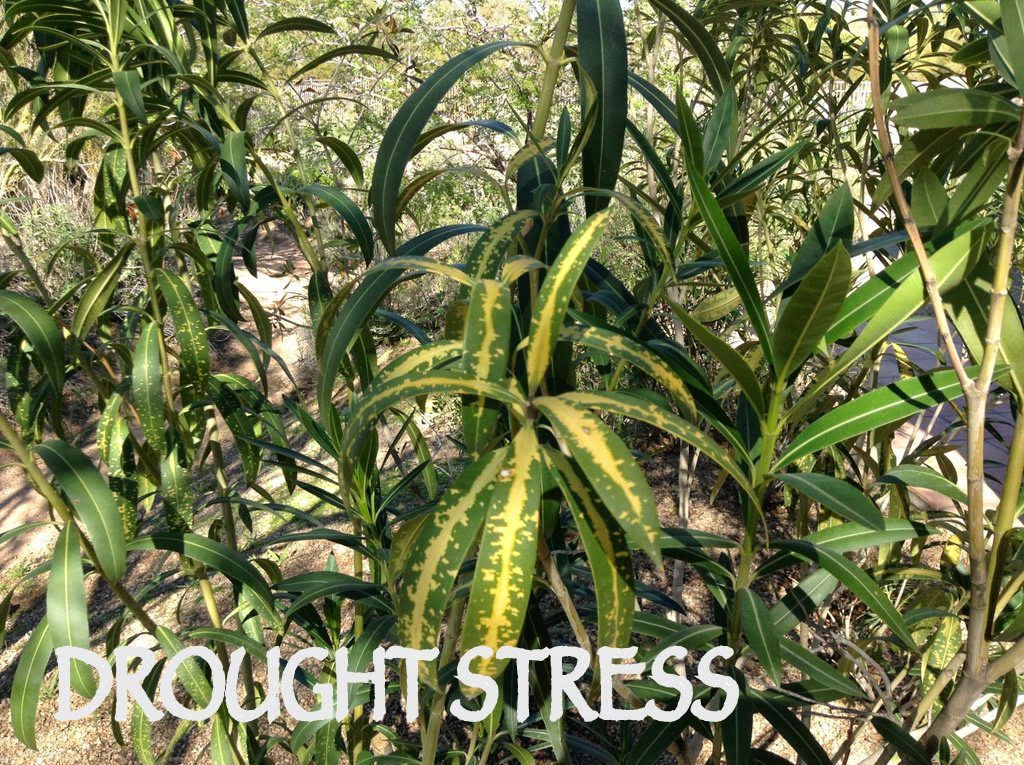
Drought-stressed oleander leaves
Note that the middle of the oleander leaf is affected by drought stress. While unsightly, the oleander pictured above does NOT show signs of oleander leaf scorch.
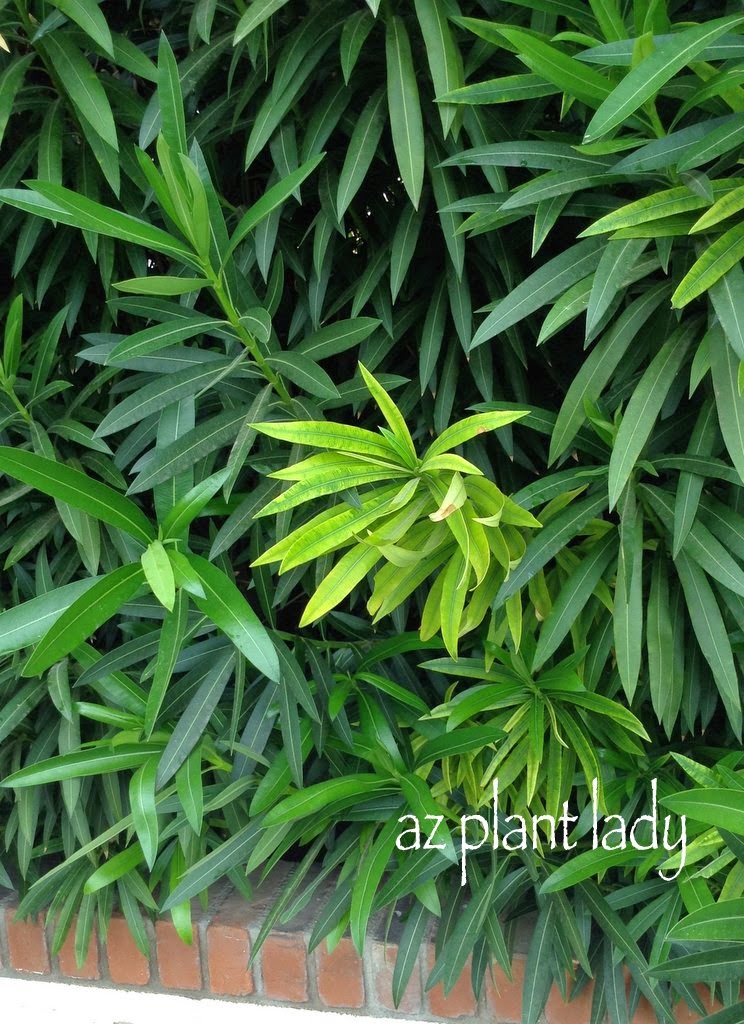
Initial signs of oleander leaf scorch.
Back to the oleanders showing signs of oleander leaf scorch – I could see the beginning of symptoms with lighter green alongside darker leaves by looking closely at seemingly healthy oleanders. The signs of the disease don’t show up all at once initially. Often, it starts with a branch here and there showing signs initially that will gradually progress throughout the entire plant.
It’s important to note that once an oleander has been infected with this disease, the entire plant has it—not just the branches that initially show the first signs. When oleander leaf scorch first showed up, it mainly affected large oleander shrubs, but in recent years, it has also been seen in dwarf species.
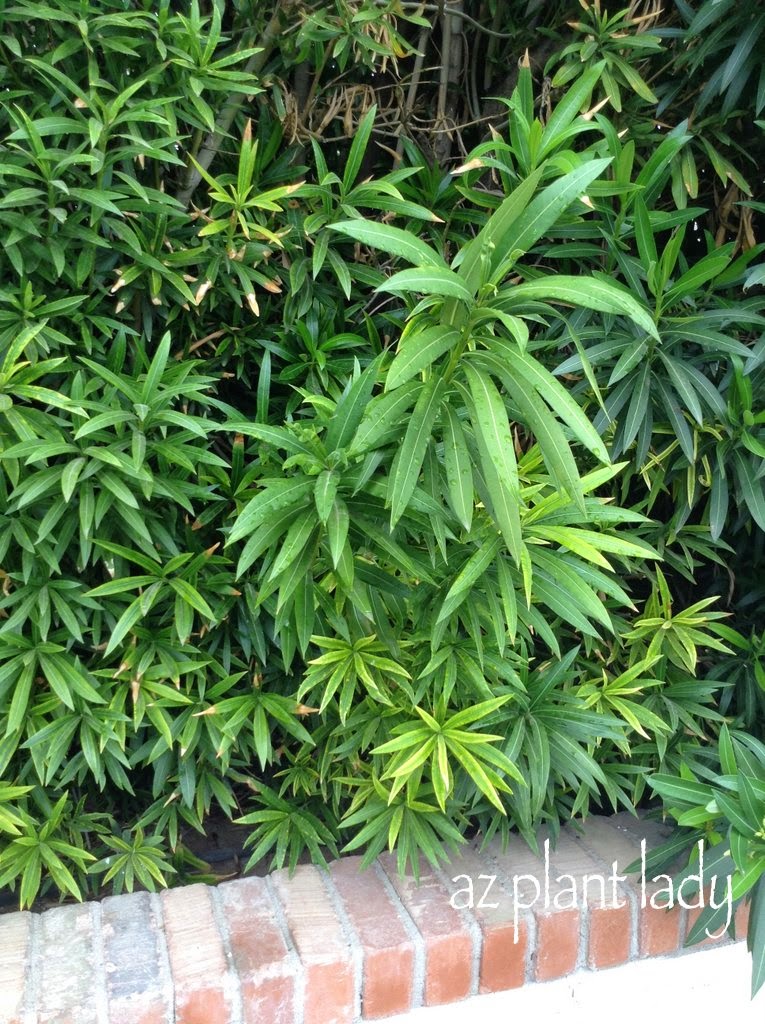
Lower leaves showing the beginning symptoms of oleander leaf scorch.
So, what is the treatment for oleander leaf scorch? Sadly, there is no cure, and once infected, it will eventually kill oleanders over a 3 – 5 years.
Some experts recommend pruning out affected branches to improve the appearance of infected oleander shrubs for the short term, but the shrubs will die.
I recommend removing infected oleanders right away to help keep the disease from spreading.
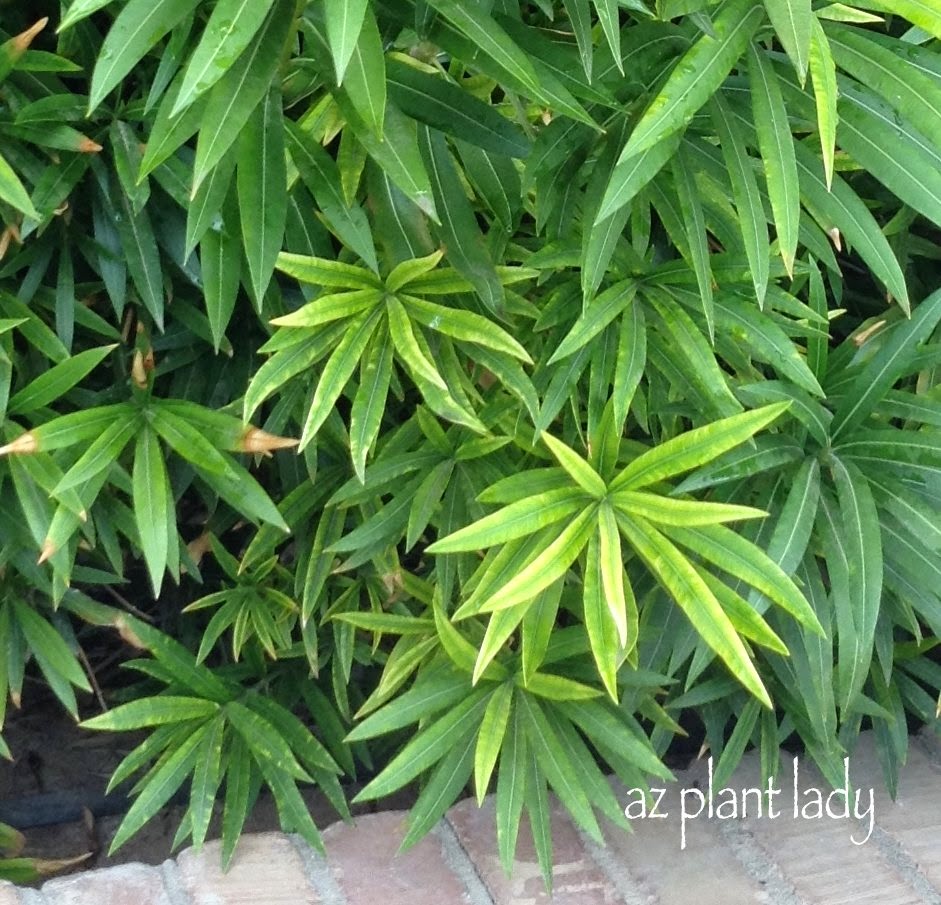
Initial signs of oleander leaf scorch
Consult with an expert if you suspect that your oleanders are infected. Problems with irrigation, nutrient deficiency, and salt burn can mimic some of the symptoms of oleander leaf scorch, and a horticulturist or other landscape expert can help you rule out other causes. Ultimately, positive identification of oleander leaf scorch can only be made by lab tests through your local cooperative extension office.
Can you get rid of the infected oleanders and start over with new ones? The answer is “no.” The disease is already present in the local sharpshooter insect population, and it is only a matter of time before it infects your new oleander shrubs.
I recommend using Arizona rosewood (Vauquelinia californica) or hopbush (Dodonaea viscosa) as an alternative to oleanders. Both are evergreen, recommended for use near pools, make a great hedge, are drought tolerant, and attractive.
For more information on oleander leaf scorch, you may want to check out the following links:
Leaf Scorch Management Guidelines
Oleander Leaf Scorch Strikes Again…


